Fiat Panda vs Kia Stonic - Differences and prices compared
Costs and Efficiency:
When it comes to price and running costs, the biggest differences usually appear. This is often where you see which car fits your budget better in the long run.
Fiat Panda has a significantly advantage in terms of price – it starts at 14100 £, while the Kia Stonic costs 20100 £. That’s a price difference of around 6000 £.
Fuel consumption also shows a difference: Fiat Panda manages with 5 L and is therefore to a small extent more efficient than the Kia Stonic with 5.60 L. The difference is about 0.60 L per 100 km.
Engine and Performance:
Power, torque and acceleration are the classic benchmarks for car enthusiasts – and here, some clear differences start to show.
When it comes to engine power, the Kia Stonic has a noticeable edge – offering 115 HP compared to 70 HP. That’s roughly 45 HP more horsepower.
In acceleration from 0 to 100 km/h, the Kia Stonic is noticeable quicker – completing the sprint in 10.70 s, while the Fiat Panda takes 13.90 s. That’s about 3.20 s faster.
In terms of top speed, the Kia Stonic performs hardly perceptible better – reaching 182 km/h, while the Fiat Panda tops out at 164 km/h. The difference is around 18 km/h.
There’s also a difference in torque: Kia Stonic pulls decisively stronger with 200 Nm compared to 92 Nm. That’s about 108 Nm difference.
Space and Everyday Use:
Beyond pure performance, interior space and usability matter most in daily life. This is where you see which car is more practical and versatile.
Seats: Kia Stonic offers slightly more seating capacity – 5 vs 4.
In curb weight, Fiat Panda is a bit lighter – 1055 kg compared to 1205 kg. The difference is around 150 kg.
In terms of boot space, the Kia Stonic offers clearly perceptible more room – 352 L compared to 225 L. That’s a difference of about 127 L.
In maximum load capacity, the Kia Stonic performs evident better – up to 1155 L, which is about 285 L more than the Fiat Panda.
When it comes to payload, Kia Stonic slightly takes the win – 445 kg compared to 365 kg. That’s a difference of about 80 kg.
Who comes out on top?
Overall, the Kia Stonic shows itself to be leaves the rival little chance and secures the title of DriveDuel Champion.
It convinces with the more balanced overall package and proves to be the more versatile choice for everyday use.
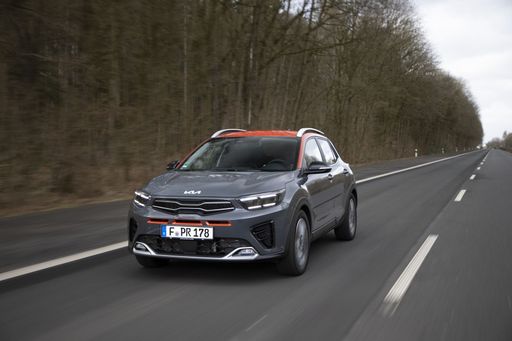 @ Kia Corporation
@ Kia Corporation
Kia Stonic
Costs and Consumption
View detailed analysis
Engine and Performance
View detailed analysis
Dimensions and Body
View detailed analysis
Fiat Panda
The Panda is a charming, no-nonsense city companion that mixes cheerful Italian flair with genuinely useful practicality, making tight streets and daily errands feel less of a chore. Its honest simplicity, clever packaging and a dash of cheeky character make it a smart, low-stress buy for people who prefer sensible perks over showroom flash.
details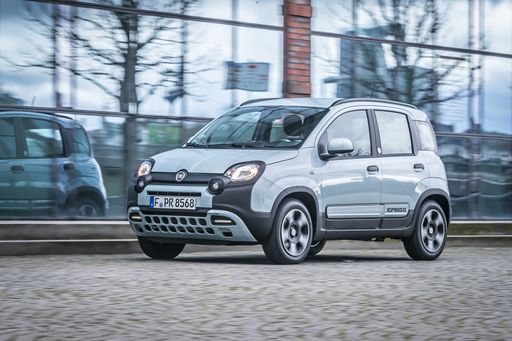 @ Fiat / Stellantis Media
@ Fiat / Stellantis Media
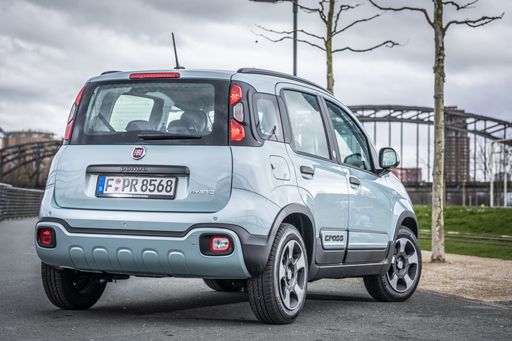 @ Fiat / Stellantis Media
@ Fiat / Stellantis Media
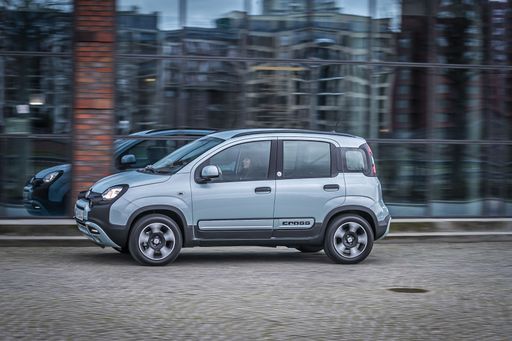 @ Fiat / Stellantis Media
@ Fiat / Stellantis Media
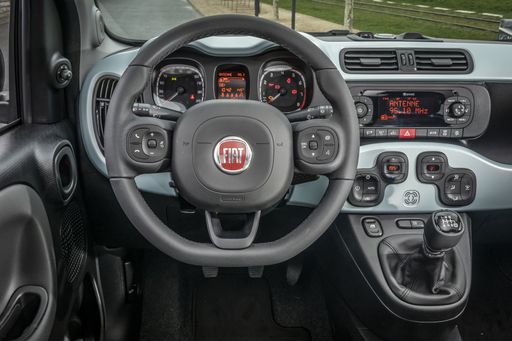 @ Fiat / Stellantis Media
@ Fiat / Stellantis Media
Kia Stonic
The Kia Stonic is a sprightly compact crossover that mixes city-friendly agility with a cheeky, modern design — perfect for buyers who want style without sacrificing sense. Inside it serves up clever practicality and a bright, well-equipped cabin, making everyday driving feel a bit more fun than it has any right to be.
details @ Kia Corporation
@ Kia Corporation
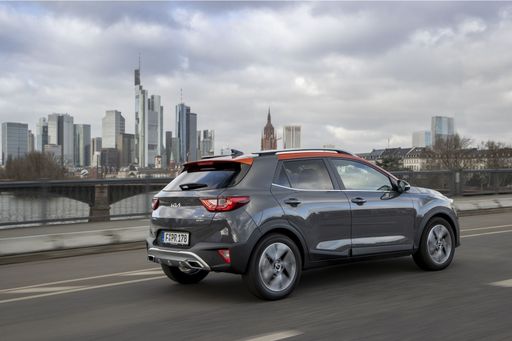 @ Kia Corporation
@ Kia Corporation
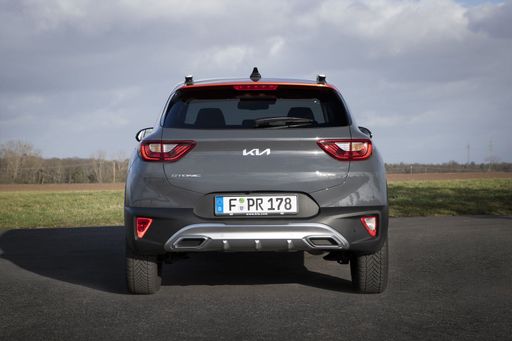 @ Kia Corporation
@ Kia Corporation
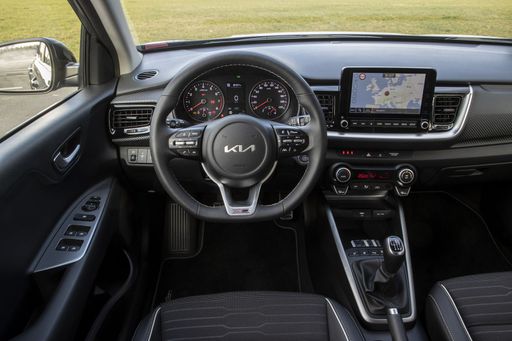 @ Kia Corporation
@ Kia Corporation
 @ Kia Corporation
@ Kia Corporation
 @ Fiat / Stellantis Media
@ Fiat / Stellantis Media
|
 @ Kia Corporation
@ Kia Corporation
|
|
|
|
Costs and Consumption |
|
|---|---|
|
Price
14100 £
|
Price
20100 - 26600 £
|
|
Consumption L/100km
5 L
|
Consumption L/100km
5.6 - 5.9 L
|
|
Consumption kWh/100km
-
|
Consumption kWh/100km
-
|
|
Electric Range
-
|
Electric Range
-
|
|
Battery Capacity
-
|
Battery Capacity
-
|
|
co2
113 g/km
|
co2
127 - 133 g/km
|
|
Fuel tank capacity
38 L
|
Fuel tank capacity
45 L
|
Dimensions and Body |
|
|---|---|
|
Body Type
Hatchback
|
Body Type
SUV
|
|
Seats
4
|
Seats
5
|
|
Doors
5
|
Doors
5
|
|
Curb weight
1055 kg
|
Curb weight
1205 - 1270 kg
|
|
Trunk capacity
225 L
|
Trunk capacity
352 L
|
|
Length
3635 mm
|
Length
4165 mm
|
|
Width
1643 mm
|
Width
1760 mm
|
|
Height
1551 mm
|
Height
1520 mm
|
|
Max trunk capacity
870 L
|
Max trunk capacity
1155 L
|
|
Payload
365 kg
|
Payload
440 - 445 kg
|
Engine and Performance |
|
|---|---|
|
Engine Type
Petrol MHEV
|
Engine Type
Petrol, Petrol MHEV
|
|
Transmission
Manuel
|
Transmission
Manuel, Automatic
|
|
Transmission Detail
Manual Gearbox
|
Transmission Detail
Manual Gearbox, Dual-Clutch Automatic
|
|
Drive Type
Front-Wheel Drive
|
Drive Type
Front-Wheel Drive
|
|
Power HP
70 HP
|
Power HP
100 - 115 HP
|
|
Acceleration 0-100km/h
13.90 s
|
Acceleration 0-100km/h
10.7 - 12.1 s
|
|
Max Speed
164 km/h
|
Max Speed
179 - 182 km/h
|
|
Torque
92 Nm
|
Torque
172 - 200 Nm
|
|
Number of Cylinders
3
|
Number of Cylinders
3
|
|
Power kW
51 kW
|
Power kW
74 - 85 kW
|
|
Engine capacity
999 cm3
|
Engine capacity
998 cm3
|
General |
|
|---|---|
|
Model Year
2024
|
Model Year
2025
|
|
CO2 Efficiency Class
C
|
CO2 Efficiency Class
D
|
|
Brand
Fiat
|
Brand
Kia
|
Is the Fiat Panda offered with different drivetrains?
Available configurations include Front-Wheel Drive.
The prices and data displayed are estimates based on German list prices and may vary by country. This information is not legally binding.
